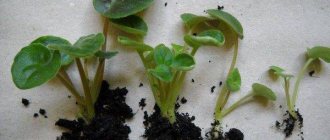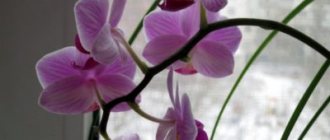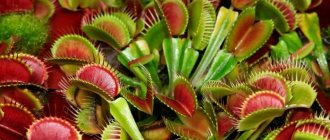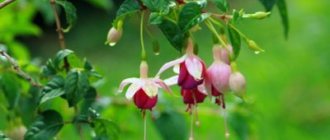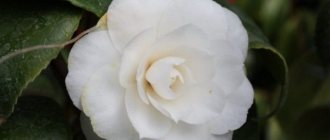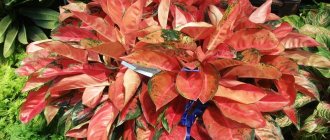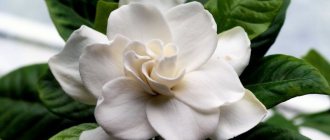Decorative camellia is considered a good gift for any occasion. Its beautiful, large flowers can not only lift your spirits on winter days, but will also become a unique addition to your home interior. Knowing the secrets of caring for and growing camellia at home, you can achieve its good growth and annual flowering.
Also, this wonderful plant, due to its decorative foliage and beautiful flowering, can be grown on a personal plot in regions with a warm climate. Camellia flower. The photo of the plant is striking in its beauty. Experts from the Agronom.guru portal will share with you the secrets of plant care and tell you how to cope with growing difficulties and diseases that are typical for the flower.
Camellia - tea flower for home decoration
What is camellia - a brief botanical information
The evergreen beautifully flowering camellia belongs to the Tea family. The plant is native to the tropics of the East and subtropics of Southeast Asia. In nature, the flower is a shrub or small tree with a loose crown growing up to several meters. They named it in honor of Camellus, who first discovered this plant and brought it to Europe from the Philippines.
The dark green leaves are round in shape and arranged singly or in pairs. The flowers are large and, depending on the variety, colored red, pink, snow-white or variegated. Flowering occurs in winter and lasts until mid-spring.
Camellia can bloom even in the winter season
Beneficial features
Camellia not only brings aesthetic pleasure during the period of mass flowering, but also has other useful qualities:
- Gives positive energy, promotes normalization of relations between family members and harmony in intimate relationships.
- Essential oil from the leaves is used in cosmetology and medicine.
- A decoction of the leaves gives hair shine and silkiness when rinsed.
- After special processing, young leaves are used to produce tea.
What indoor and garden colors look like in the photo
Camellia flowers are large, single, single or double. Their color can be varied: snow-white, scarlet, soft pink or variegated. The petals may have stains, spots or specks that smoothly transition from one color to another. In shape they resemble roses, peonies, anemones or carnations.
This flower in the interior is impossible not to notice
Catalog of indoor flowers with photos and their names. In a special publication on our portal we will talk in detail about indoor flowers. You will learn the types of indoor flowers, about fruit indoor flowers and get acquainted with the photo gallery.
Garden plant option
Determine the name of a garden flower from a photo. In a special publication on our portal we will talk in detail about garden flowers. You will learn about the types of garden flowers, perennials that winter in open ground and look at the photo gallery.
Camellia – photo
A spectacular camellia will become a star and the center of attention wherever it is placed. We invite you to see this clearly with our photo gallery!
Photo: funart.pro Photo: kulinaria-ok.ru
Photo: wallbox.ru Photo: domashniecvety.ru Photo: zastavki.com
Photo: sdelai-lestnicu.ru Photo: oir.mobi Photo: lifeisphoto.ru Photo: armlur.am
Photo: davesgarden.com Photo: sarahpdukegardens.blogspot.com
Photo: keywordsbasket.com
Photo: oir.mobi Photo: pro-remont.mediasalt.ru Photo: automaticgarden.wordpress.com Photo: pixabay.com
Photo: zen.yandex.ru Photo: colorprofi.ru Photo: funart.pro
Photo: zen.yandex.ru
Photo: mobilemusic.ru
Photo: zen.yandex.ru Photo: oir.mobi
Photo: camellia-sasanqua.com
Photo: stephcupoftea.blogspot.com
Photo: pixabay.com
Did you like the post? Subscribe to our channel in Yandex.Zen, it really helps us in our development!
Features of varieties: mountain, Japanese, Chinese and Middlebury pink
Breeders have developed a large number of varieties and hybrids that are popular for growing at home and in the garden. The most common of them are presented below.
Camellia montana , or flower of the winter sun. This variety came from Okunawa Island. In nature it is a shrub reaching up to 5 m in height. Thin flexible branches are covered with red fibers. The leaf blade is wide and long, oval-shaped and dark green in color. The flowers are large, reaching up to 7 cm in diameter, have a white, red or pink color with an unforgettable aroma. Their color and shape depend on the type of mountain camellia.
Blooms in gardens and indoors in cool climates from November to March.
Japanese camellia . This species grows in Korean and Japanese forests as a shrub growing up to 13 m in height. Flowers can be single, double or semi-double depending on the species. Color of inflorescences: from white to all shades of scarlet and pink. The flowers are similar in shape to a rose, peony or anemone, but without a distinct aroma. They bloom from the axils of the leaves, forming a chic, beautifully flowering crown. Flowering occurs in late autumn and lasts until mid-spring. Each flower stays on the plant for up to 30 days. At home, Japanese camellia, with good care, grows up to 1 m. This variety has many types. The most common:
Alba Simplex Pink perfection Camellia Japonica Easter Morn Debbie Callifornia
Dream Girl
Chinese camellia , or bohea. This variety is known as the tea tree, the leaves of which are used to make black or green tea. In natural habitats it grows on mountain slopes, gorges and forests of China. The plant can reach several tens of meters in height. The leaves are large, ovoid, and when young they have a white waxy coating with a silver fluff. Long tea varieties are made from young leaves, and the flowers are used as an aromatic additive.
This variety is grown very rarely as a houseplant, as it requires proper care.
Camellia middlebury rosea . The rarest variety with soft pink flowers that bloom in mid-autumn. The inflorescences are large, double, odorless. The petals are neatly arranged in the form of tiles. Flowers fade gradually, while maintaining rich color. Thanks to this, the plant always looks neat and well-groomed.
Flowering begins in mid-November and continues until mid-March
Types of camellia
According to various classifications, the Camellia genus has up to 250 species. Of course, we won’t be able to go through them all, but we’ll look at the most popular ones!
Chinese camellia
It is also called the tea bush and has been cultivated in the East for many centuries. It was from China, and later from Japan, that it spread throughout the world. The height of the tree in nature reaches 10 m. Flowering begins in August.
Photo: gardenbythesea.org
Mountain camellia
Large shrubs stretch up to about 4 m. Fragrant single white or red flowers bloom on reddish fleecy shoots. There are many beautiful garden and indoor varieties.
Photo: mysdelaisam.ru
Camellia oleifera
Its seeds are very rich in nutritious oils, which is why it got its name. This is a tall tree with inconspicuous white flowers and large spherical fruits.
Photo: my-farmer.ru
Japanese camellia
This group includes a huge variety of decorative varieties of various colors. They differ in size, degree of terryness and structure of the buds. Japanese camellia is also used in folk medicine.
Photo: greensotka.ru
Lobularia (50 photos): types, care and planting in open ground
How to care at home
Camellia is a very capricious plant, and if you do not know all the rules of care, the flower can quickly wither and die.
Air temperature and humidity
In order for the plant to delight with its flowering, it must be protected from drafts and sudden changes in temperature. In winter, the air temperature should be kept within +12°C. Therefore, it can be placed on an insulated loggia or balcony. In the spring-summer period, when the plant enters the active growth phase, the air temperature should be about +25°C. At the end of summer, when flower buds begin to form, it is reduced to +18°C.
Air humidity also plays an important role in plant care. Camellia prefers moist air, so install a humidifier next to the plant or pour wet moss or expanded clay into a tray. Also, the flower must be periodically sprayed with warm, settled water.
When spraying, water should not get on the buds, as this will lead to the dropping of buds and flowers.
High air temperature during the formation of buds will lead to their discarding
Location and lighting
For good camellia growth, bright, indirect light is needed. To do this, it is placed on the western or eastern side. In the open sun, the flower will suffer from excess light and begin to shed foliage and buds. And on the north side it will need additional lighting.
Mountain camellia can grow in full sun, while Japanese camellia prefers partial shade.
How to feed and water
This flower needs a lot of water, only after the top layer of soil has completely dried. Watering should be carried out with settled warm water strictly at the root. The best option for watering would be rain or melt water, since it contains those microelements that are so necessary for indoor plants. In winter, watering is reduced to avoid soil acidification. The first sign of souring is that the leaves turn brown and the buds fall off.
Before flowering, the soil in the pot should be slightly dry
In the spring, when intensive growth of young shoots begins, camellia needs feeding. For this purpose, complex fertilizers are suitable, which are specially designed for flowering indoor plants.
You need to dilute the concentrate twice as much as indicated in the instructions.
At the end of summer, when the plant begins to prepare for flowering, fertilizing is completely eliminated.
Camellia needs to be fertilized once every 10 days.
Which soil to choose
Camellia prefers acidic, well-drained and nutritious soil. Peat soil can be purchased at the store. And to make the soil more loose, you can add pine needles, perlite or crushed tree bark to it. You can increase acidity using citric or oxalic acid.
Camellia prefers light, permeable soil.
How to replant: step-by-step instructions with photos
A young tree must be replanted once a year. Adults – once every 4 years. In order not to damage the delicate root system, the plant is replanted using the transshipment method.
| Photo | Action |
| For annual flowering, an adult camellia needs to be replanted every 3-4 years. | |
| To make the plant feel comfortable, you need to take a larger pot. | |
| Place a 2-3 cm layer of drainage on the bottom of the pot. | |
| To avoid damaging the root system, remove the plant from the pot along with a lump of earth. | |
| Place the flower in the center of the prepared pot and fill the voids with nutritious soil. | |
| The soil can be purchased at the store; it should be nutritious, well-drained and permeable. | |
| After transplanting, compact the soil and place the pot in a warm, bright place. |
Replanting must be done carefully so as not to damage the root system.
Conditions of detention
To keep camellia at home, you need to comply with the requirements for each season, since the health of the plant greatly depends on this. Even a small deviation from the norm can provoke the onset of a disease and subsequent wilting of the camellia.
Table: Conditions for keeping camellia at different times of the year
| Winter | Spring | Summer | Autumn | |
| Temperature | +(5–10)°C | The optimal temperature for maintaining camellia life is from +15 to +35°C. When it is lower, the flower enters a state of dormancy, when it is higher, it enters a state of stagnation (in contrast to the state of dormancy, this state is harmful to the plant). | ||
| Humidity | Camellias prefer high air humidity - up to 90%, but in the summer this figure may be slightly reduced. Most varieties tolerate 75–80% or even lower without loss. | |||
| Lighting | Diffused light / penumbra | Before 10 and after 18 o'clock the camellia is kept in the light, and at midday it is removed to a shaded room. Interestingly, varieties with white and light pink flowers require more shade than all others. | Diffused light/penumbra | |
Recently, so-called florariums have become very popular - compositions of domestic plants placed in a glass container, starting from a decorative glass and filling it with an aquarium. There is also a floor option that can reach a height of up to two meters. Florariums are divided into closed and open, the first of which are good for tropical plants that love high humidity, and the second for succulents that prefer a dry atmosphere.
Camellia is difficult to classify as a flower recommended for growing in a florarium - it’s not the right size, and caring for it is much more difficult than many other flowers
Of course, many people have a question: how well is camellia suitable for a florarium? It is difficult to formulate a clear and unambiguous answer to this question, but one thing can be said with confidence: camellia is not an obvious option for a florarium, and there are reasons for this. Firstly, domesticated camellia, although no match for its forest and mountain counterparts in terms of size, still has rather large dimensions, and only a very large aquarium or a special glass box, which requires a lot of space and financial costs, can accommodate it. Secondly, camellia has its own specifics, which is expressed in the fact that it is not possible to constantly maintain high humidity all year round. Although Camellia does not like drafts, it needs an influx of fresh air, and during periods of stagnant humidity it can quickly get sick. In addition, you will have to regularly monitor the soil moisture level - at the time when the flower grows buds and begins to bloom, the soil must be kept moist at a constant level. But during the growing season, the soil can be dried between waterings.
The conclusion is obvious: it is much easier and more effective to grow camellia as an independent plant in a pot. Moreover, not every pot is suitable: the best options are oak tubs or unglazed ceramic pots. Both should be large. In such a container you can quickly move the camellia from light to partial shade when necessary. And to maintain the required humidity, you can purchase a humidifier.
Video: Camellia - care and features
Caring for a flower in the open ground
Nowadays, breeders have developed many varieties of garden camellia that grow well in open ground even in regions with harsh climates. But in order to achieve success in growing and see flowers on a garden plant, you need to put in a lot of effort and patience.
Soil preparation and planting
Growing camellias in the garden should begin with preparing the soil. Since garden soil is dense and does not allow water and air to pass through well, it needs to be slightly improved. To do this, make good drainage, acidify the soil and add peat, sand and compost. It is better to plant a flowering camellia in a permanent place, since at this time it is in a dormant period and, with the accumulation of strength, will tolerate transplantation much better.
How to properly transplant camellia into open ground:
- The purchased plant is carefully removed from the container, trying to preserve the earthen lump.
- When installing a plant in a hole, you need to make sure that the root collar is not too deep into the ground. But you shouldn’t leave it close to the surface of the earth, as there is a possibility that the plant will not survive the winter.
- After transplantation, the soil is compacted, watered and mulched.
- If several plants are planted, the distance between the holes should be at least 2 m.
Camellia is planted in a pre-diluted hole
Caring for garden camellia
Caring for camellia planted on a personal plot consists of timely watering, fertilizing and pruning.
Watering and fertilizing
Garden camellia is very demanding on water quality. You cannot water the shrub with tap water, as it contains a high lime content. In hot summers, the plant is watered 2-3 times a month. The first sign of a lack of moisture is the leaves drying out and falling off. In rainy summers, no watering is required.
Tree camellia is an ideal solution for landscape decoration
In the spring, during the period of active growth of young shoots, garden camellia needs to be fed twice a month. Feeding must be of high quality. Fertilizers intended for feeding azaleas are suitable for camellias.
The plant should not be overfed, as this will lead to intensive growth during the dormant period.
In the autumn, feeding is stopped, and the bushes begin to be prepared for wintering.
In regions with harsh climates, the plant is dug up and stored indoors
How to prune to form a crown
They begin to form the crown in the spring by pinching the shoots. This is necessary for better branching of the bush. In autumn, shoots are pruned to stimulate the growth of axillary buds.
With annual pruning, camellia turns into a beautiful flowering shrub.
Pruning is carried out with a sterile sharp instrument
Preparing for winter
If camellia grows in a region with harsh winters, it must be dug up and wintered in a room where the air temperature will not drop below +2°C. In regions with a mild climate, the plant is covered with breathable material.
Subtleties of care
Camellia is one of the plants that requires certain conditions to be successfully grown. Therefore, let's talk about how to grow camellia in city apartments and make it bloom. When you see a flowering plant on sale, you feel the desire to purchase a luxurious flower. But often such a purchase ends in the death of the plant after flowering ends.
Creating a comfortable temperature regime
The most important thing is to ensure temperature conditions, because for normal development a flower needs conditions close to natural. For flowering in winter, camellia is recommended to be kept at a temperature of 10-15 degrees. It can withstand slight sub-zero temperatures. It is impossible to maintain coolness in an apartment with central heating. But if you have a glazed, insulated loggia, balcony or cool veranda in a private house, then you can admire the flowering plant all winter. In summer, camellia prefers moderate temperatures in the range of 20-25 degrees.
Camellia is demanding on lighting, so with short daylight hours it is necessary to provide it with additional lighting. As a result, daylight hours should reach twelve to fourteen hours. When placing a flower on a window facing south, you need to take care to protect it from direct sunlight and moisturize it. The most suitable would be an eastern or western window, where the camellia is not threatened by the hot midday sun. On a window facing north, the plant shreds and stretches out.
This may be interesting: Koleria - home care
Watering, moistening and fertilizing
Camellia is one of the flowers that begins to grow shoots in the spring. At the beginning of autumn, buds are laid and flowering occurs in winter. Therefore, watering and the application of mineral fertilizers must be organized taking into account the annual growth cycle. Camellia needs bottom watering through a tray, draining the remaining water after an hour and a half.
In the spring, when new shoots begin to grow, and in the summer, camellias need to be watered frequently and abundantly. But the soil should not be allowed to become waterlogged, because this will lead to rotting of the roots. In winter, watering is reduced to once a week. Camellias are harmed by an increase in calcium salts in the soil, so the water must be settled. You can use melted or boiled water. Sometimes it is recommended to add a small amount of vinegar or citric acid to the water to increase the acidity of the soil.
Camellia needs air humidification, especially if the pot with the plant remains in the apartment for the winter. Hot radiators dry out the air greatly, which can lead to buds and leaves falling off. Therefore, the foliage is periodically sprayed without moistening the soil. You can place the pot in a tray with damp expanded clay or moss. If possible, we recommend installing a humidifier, which will create a comfortable microclimate not only for the flower, but also for people.
In the spring, when young shoots begin to grow, you can start feeding camellias. To do this, use fertilizers for azaleas. The amount indicated on the package is halved. Fertilize no more than 1-2 times a month. In July, fertilization is stopped until next spring. When choosing fertilizers, you should pay attention to ensure that they do not contain calcium and magnesium. Excess calcium in the soil causes buds to fall off.
Crown formation
In order to give a compact shape and remove weak shoots, camellias are pruned. This procedure is performed at the end of flowering. After pruning, the plant produces new shoots more actively. Flower growers who have been growing camellia for many years already know how many shoots need to be left so as not to weaken the bush with abundant flowering.
By cutting shoots, you can form a bush or tree. After pruning, the cut of large woody branches is treated with garden varnish. It is permissible to trim shoots to half their length.
Important! During the formation of buds, we do not recommend rearranging or turning the pot, otherwise the plant may drop the buds.
How does it reproduce
Camellia can be propagated in two ways: cuttings and seeds.
Propagation of camellia by cuttings: step-by-step instructions with photos
| Photo | Action |
| Camellia is best propagated by lignified cuttings, which are cut in mid-summer. The cutting must be at least 8 cm long and have 5 leaves. Before rooting, planting material must be treated with a root formation stimulator. | |
| The seedling is placed in prepared soil consisting of moistened sand and peat in a 1:1 ratio. Before it is buried in the soil, it must be treated with a phytohormone. This is necessary for better soil heating. | |
| For rapid rooting, the air temperature must be more than +25°C. To maintain a favorable microclimate, place a plastic bag or glass dome on the pot with the seedling. Under such conditions, the cuttings will germinate in 60 days. |
Sowing seeds
The seed propagation method is simple, effective, but time consuming. Seeds are sown in a moist substrate consisting of sand and peat, the container is covered with polyethylene and put in a warm, bright place for germination. The duration of this process depends on the conditions, and it can last from several months to a year.
As soon as the first shoots appear, the film is removed, the seedlings are watered and planted. Each plant is planted in separate pots with a volume of at least 7 cm. Camellia grown from seeds is more adapted to sudden temperature changes and grows much faster.
A plant grown from seeds begins to bloom in the 5th year.
The ripe seed pod is dark brown in color.
Reproduction and planting of camellia
Camellia is almost never planted with seeds at home, because they are too oily, quickly lose their germination capacity, and the process in general is problematic. Cuttings are used for propagation.
At the height of summer, cut the young apical shoots and immediately place them for rooting in peat with sand or perlite. It is best to cover them with a bag and ventilate them periodically. You need diffused light and a temperature of +20 degrees. And also be patient, because the rooting process will take about 2 months.
In addition, camellia can be grafted. This is especially true for capricious ornamental varieties that do not take root well. A shoot with several buds is attached to the rootstock in mid-January. It needs to be sprayed, watered and kept at +10 degrees and diffused lighting. In a couple of months the escape will take root.
Photo: flower care.rf
Diseases and pests
When growing camellia, gardeners often encounter some problems. The most important of them are diseases and pests.
Yellow spot . The leaf blade is covered with yellow spots of irregular shape. At the initial stage of the disease, damaged leaves are removed and the plant is quarantined.
Phyllostictyosis. Brown spots of various shapes appear on the leaves. This disease can appear with high air humidity. For the plant to recover, it is necessary to regulate the humidity, remove all affected leaves, and before the onset of cold weather, the plant is treated with copper sulfate.
Weevil-mower. This insect can be recognized by its leaves. The edges of the leaf plate are gnawed, and the plate itself loses color over time, dries out and falls off. The insect lays larvae in the ground. Adults are the most dangerous, as they very quickly damage the root system, which leads to the death of the plant. Treatment consists of treating the flower with a solution of “Fly-eater” or “Medvedka”.
Shield. Damages young shoots, forming golden-brown tubercles on them. You can fight the pest by wiping the leaves with kerosene.
Mite. The insect appears when growing shrubs in a room with high temperature and low air humidity. When infected by this insect, the leaf blade becomes covered with yellow spots, which quickly grow without treatment. You can get rid of ticks using insecticides.
How to get rid of midges in indoor flowers using simple methods. In a special publication on our portal, we will talk in detail about how to get rid of pests in indoor plants. You will learn the reasons for their appearance, the types of midges and their signs and measures to prevent the appearance of midges.
Varieties
When buying camellia seedlings, you need to pay attention to ensure that the variety is as frost-resistant as possible. Hybrids of the species and varieties of C. japonica, C. saluenensis, C. oleifera and C. sasanqua are much more resistant.
The following camellia hybrids are distinguished by increased frost resistance; they can grow in the ground throughout the year in the southern regions:
- "Lady Cambell" Lady Cambell is one of the few camellia varieties with a delicate aroma. The flowers resemble begonias, double, pink with yellow stamens.
- "Nobilissima" Nobilissima is a variety with white, double flowers, similar to peonies.
- "Wintes Hope" Winter's Hope is a variety with white semi-double flowers with yellow stamens.
- "Vintes rose" Winter's Rose - with pink flowers.
- "Polar Ice" Polar Ice - white flowers, yellow stamens.
Photo. Variety "Polar Ice"
- "Dr. King" Dr King - pink, double flowers with yellow stamens in the middle.
- “Spring Festival” Spring Festival – soft pink double flowers, growing in groups on the shoot.
- "Nuccio's Pearl" Nuccio's Pearl - very beautiful flowers, double petals are white and pink.
Their frost resistance is slightly higher than that of other varieties, but still leaves much to be desired, since the plants are able to withstand temperatures down to -5 -10 degrees C.
The following varieties can withstand lower temperatures:
- “Empress” is a garden camellia, planting and care are simple, a variety of Chelyabinsk selection, blooms in summer, frost-resistant.
- "Black Lace" Black Lace is an old, proven hybrid of Camellia reticulata and Camellia williamsii. Withstands temperatures of -20 °C. The flowers are red, double, flowering period: April – May for 6-8 weeks. The leaves are dark green, leathery, shiny, and look impressive.
- “Donation” Donation is one of the best varieties with a frost resistance zone of 7 - 8 (-15 -17 degrees C). Large semi-double pink flowers are decorated with a delicate pattern of veins. Compact variety with dark green leaves.
- "Hagoromo" Hagoromo - flowers are semi-double, white and pink. Withstands frosts down to -22-24 °C.
- "Elegens" Elegans is a variety with pink, semi-double flowers. Withstands frosts down to -15 °C. Blooms in April.
- "Rainbow" Rainbow - a variety with light pink petals, can withstand frosts down to -18 degrees Celsius.
Interesting varieties of Japanese camellia:
- "Alba Plena" Alba Plena - a variety suitable for lovers of elegant, white-flowering shrubs. The flowers are semi-double with charming yellow stamens.
- "Berenice Boddy" Berenice Boddy is a variety with pink flowers with yellow stamens protruding beyond. The flowers resemble hibiscus in appearance.
- M. Wilson is a variety with pink flowers with a feathery center, the flower resembles begonias in appearance.
- "Cinderella" Cinderella is a variety with a pink flower, with long yellow stamens. The flowers resemble hibiscus with an interesting arrangement of veins in a darker shade.
- "Descanso Yuletide" Descanso Yuletide is a salmon-red variety with long yellow stamens and green leaves.
- "Kramer's Supreme" Kramer's Supreme is a variety with green foliage and double red flowers, similar to peonies.
- "Magic Moments" Magic Moments is a pink variety with green leaves, flowers reminiscent of old varieties of roses or begonias.
- "Tom Knudsen" - red flowers look great against the background of dark green leaves.
- “Sweetsert” Sweetheart is a variety with pink, double flowers reminiscent of begonias.
- "Ted Kohl" Ted Kohl is a multi-colored plant with green and green-yellow leaves and red and white flowers.
- "Thelma Dale" Thelma Dale is a variety with double pink flowers, with visible yellow stamens. Reminds me of roses and begonia.
- "Tiffany" Tiffany - red, double flowers with inconspicuous yellow stamens.
- “Tomorrow” Tomorrow – flowers are red with a salmon tint.
The above mentioned varieties are the most popular and most often chosen for gardens and indoor decoration.
In regions with frequent early frosts, spring-blooming varieties should be selected; in areas where there is a danger of late spring frosts, it is better to plant camellia varieties that bloom in the fall.
Mistakes of novice gardeners
- Camellia sheds its leaves - very dry soil. Watering time is determined by the condition of the soil; if the soil has dried out by 5 cm, then the plant needs moisture.
- The leaf blade becomes brown, and unopened buds fall off - the shrub is overflowing. In this case, the plant is transplanted into a new substrate.
- The leaves turn brown due to sunburn. The flower grows best on the east or west side.
A capricious plant - camellia
Camellia is an ornamental plant with a long flowering period. It will perfectly complement both your home interior and will be indispensable in landscape decor. In order for a shrub to delight with its flowering, it is necessary to surround it with care and love.
Symbolism and interesting facts
In China, this beautiful plant symbolizes beauty and is the personification of fortitude, because it blooms in autumn and winter. According to Feng Shui, the flower attracts good luck. In ikebana it is combined with a pine branch. This composition equates longevity, and the flower means tenderness. In China, the red camellia symbolizes a sincere feeling of love, yellow - fiery passion, white - dreams and anticipation of a dream coming true.
For the Japanese, the camellia symbolized the short life of a warrior, lived in the glory of his victories. It’s not for nothing that it was originally considered the flower of the samurai. There was also a belief that the warrior who touched her would soon say goodbye to life. It arose from the fact that the camellia, when it blooms, does not scatter in a shower of petals, but falls to the ground as a whole inflorescence, like a head from its shoulders.
Being the flower of the samurai, the camellia is considered a good choice for a man's tattoo. Her image will testify to the endurance and good taste of the owner of the tattoo and will attract good luck to him. For the Japanese, the image of white camellias on a tattoo is a symbol of long life.
By the way, there is a very interesting article about the most beautiful tattoos on our website most-beauty.ru. If you are thinking about getting a tattoo, follow the link and you will find something suitable for yourself.
At all times, this flower has had a dual meaning. On the one hand, it is a symbol of nobility and spiritual purity, on the other, it is the personification of sadness and cold indifference. An interesting fact is that the white camellia in America was used as a symbol of the light-skinned race among adherents of the Ku Klux Klan.
A beautiful tsubaki is considered a symbol of cold beauty. It is sometimes called the “stone flower”, which is preferred by women who can love only according to calculation. Therefore, these flowers are rarely given, and even more so, it is not customary to use them in wedding bouquets. But jewelry with camellias, which are found in many collections, are considered a valuable gift.
What problems do gardeners face?
How you care for camellia depends on how it blooms. Errors in care are the main cause of plant disease and death.
- If the leaves fall, it means you are making mistakes with watering.
- Withered leaves - the plant lacks nutrients.
- If, as in the photo, brownish spots have formed on the leaves, then remove the pot from the windowsill as quickly as possible. These are signs of sunburn.
- Poor flowering is a sign of soil acidification.
- In case of attack by scale insects, mites or aphids, you need to treat the foliage with special preparations, or with an ordinary soap solution.
The video below clearly shows how to grow camellia and make it the queen of the winter garden. Have you had experience growing camellias? Write about the most important, in your opinion, in this process for readers.

